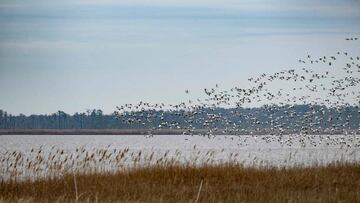H5N1 bird flu: What to know about the threat of an avian influenza outbreak
A bird flu outbreak in a Spanish mink population has scientists concerned about the possible transmission to humans.


The H5N1 aviary virus is already playing havoc in the US. Chickens have been infected and died, or culled to prevent the spread, which has kicked egg prices into overdrive. Tens of millions of the birds have died.
It is not just birds that are pressured by the flu. Despite its name, evidenced has emerged of transmission to mammals, namely minks, and then onwards to other mammals. The spread occured in the northern Spanish state of Galicia, culminating in the killing of 50,000 of the animals.
We should all be talking about this. If bird flu can spread between mammals, we could be looking at another, very dangerous pandemic.
— George Monbiot (@GeorgeMonbiot) February 2, 2023
The risk so far has been caused by two truly horrible industries: poultry farming and mink farming. Time to end them both.https://t.co/4orxCOVkSu
Though none of the farm workers have been infected, concern remains that a spread could occur in humans in the future.
What is the danger to humans?
Bird flu has been known to infect people, though inter-person transmission is yet to occur. Of the 868 known cases of H5N1 infection in humans worldwide between January 2003 and November 2022, 457 were fatal, according to the World Health Organisation (WHO), a 52% fatality rate.
Timm Harder, an avian influenza expert at the Friedrich Loeffler Institute’s diagnostic virology department in Germany, said there are “numerous hurdles for a more extensive adaptation to humans.”
Related stories
However, the spread betwen minks could pose a danger for humans in future as bird flu is now proven to transmit between the same species. Scientists weill need to study the infection of minks so we can have the safeguards in place to prevent a pandemic.
My thoughts on H5N1: we’ve been here before.
— Dr Ellie Murray, ScD (@EpiEllie) February 3, 2023
We know H5N1 transmits easily in wild & domestic birds. We know H5N1 outbreaks in mink farms be awful. We know H5N1 has very high mortality in people.
All this happened last time. And last time, person-to-person spread was minimal.
“This is incredibly concerning,” said Tom Peacock, a virologist at Imperial College London, in an interview with the scientific journal, Science. “This is a clear mechanism for a H5 pandemic to start.”

